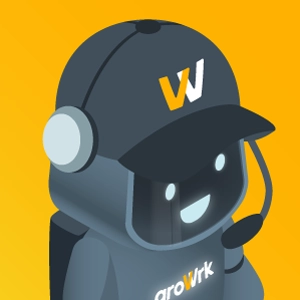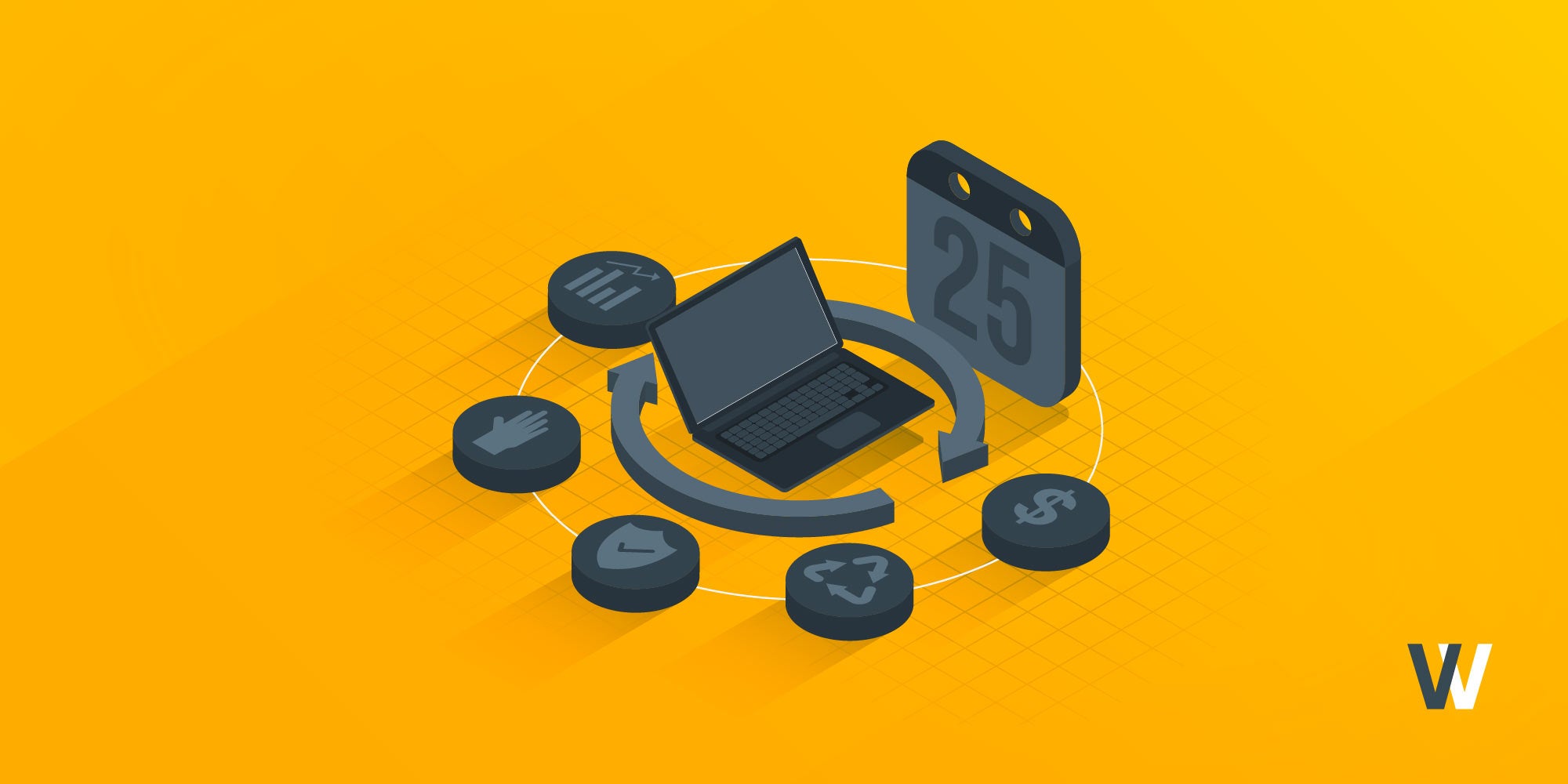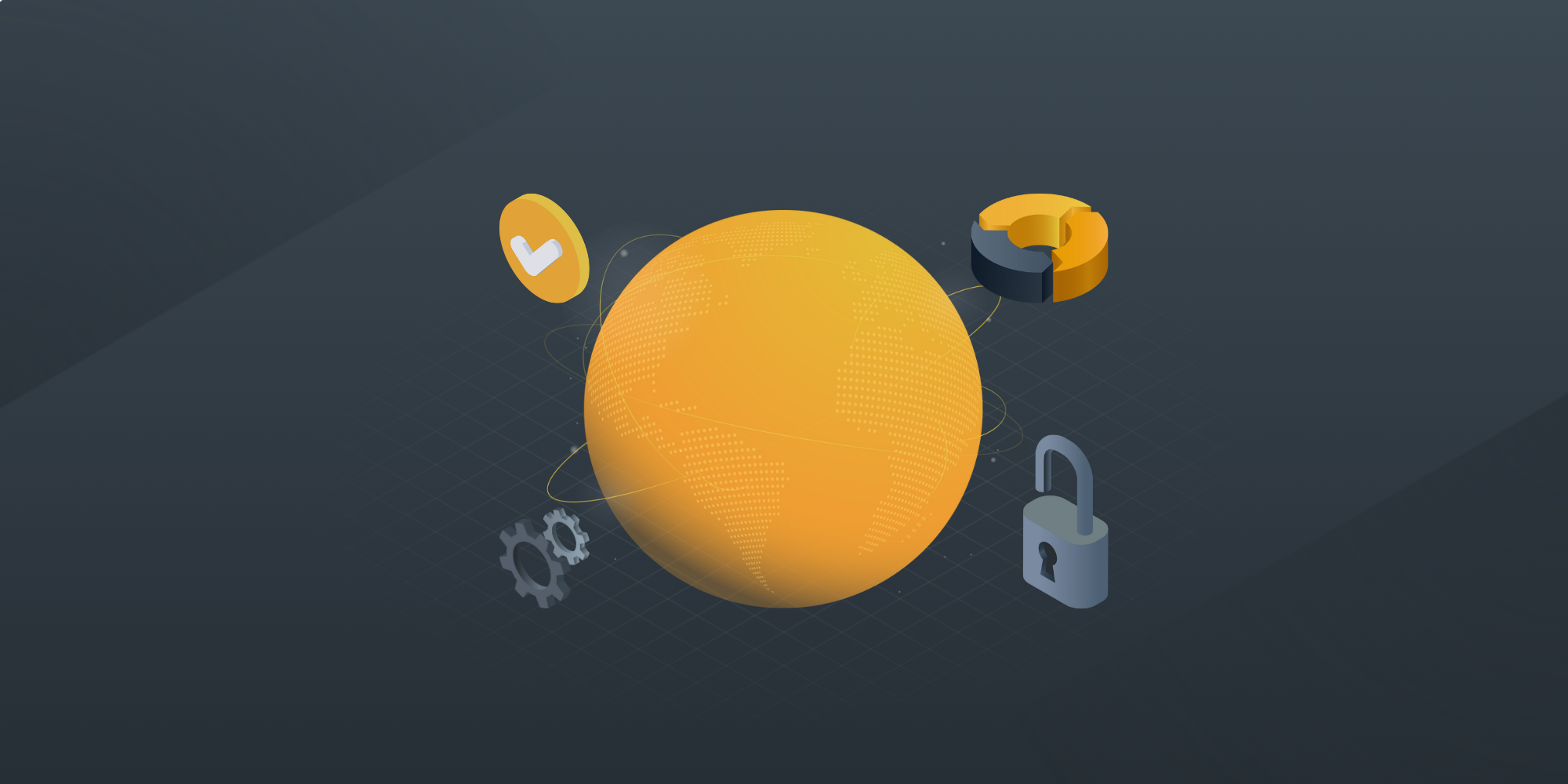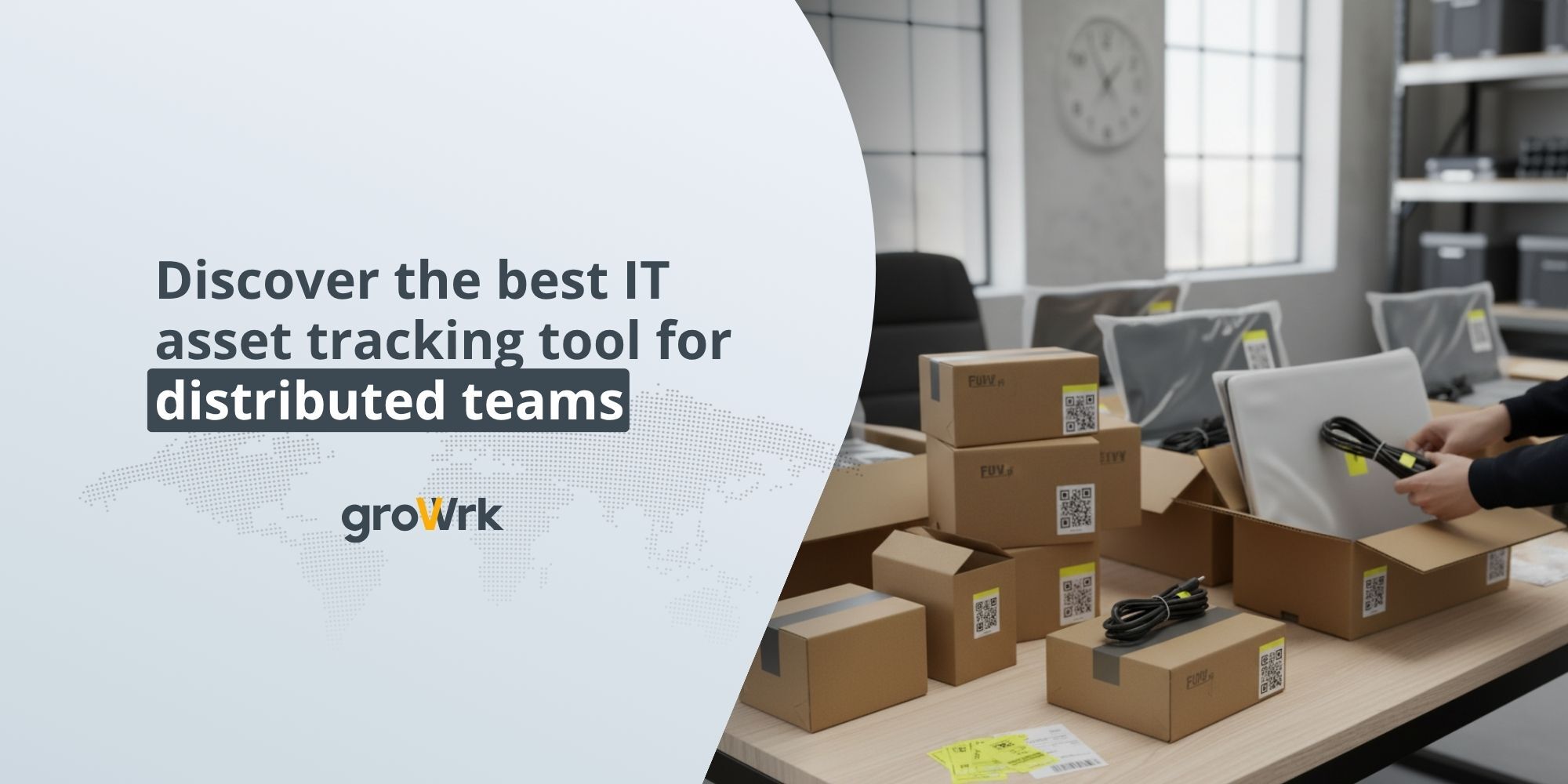Key Features Your Asset Management IT Software Must Have
 GroWrk Team
GroWrk Team
The global IT Asset Management (ITAM) software market is projected to grow by USD 737.6 million from 2025 to 2029, reflecting a compound annual growth rate (CAGR) of 9%. This growth is driven by the increasing importance of asset tracking and the rapid adoption of asset management software.
In today's complex IT environments, managing assets efficiently is crucial. ITAM software is vital in tracking assets, managing licenses, and optimizing costs throughout the asset lifecycle. By streamlining work order management, enhancing productivity, and reducing human errors, ITAM tools ensure businesses can maintain control over their IT resources.
Key Takeaways
-
IT asset management depends on thorough asset tracking; an asset management application provides real-time information on asset performance and helps you cut costs.
-
Lifecycle management, involving planning, procurement, operation, and disposal, maximizes asset utilization and ROI while minimizing maintenance costs through regular tracking and maintenance.
-
Security, data exchange, and proactive asset management all benefit from features including user management, integration, and real-time monitoring.
What is IT Asset Management (ITAM)?
IT Asset Management (ITAM) is the practice of monitoring, maintaining, and optimizing an organization’s IT assets—such as hardware, software, and digital infrastructure—throughout its lifecycle.
ITAM integrates people, processes, and technology to track each asset from procurement to disposal. It helps organizations reduce costs, extend asset lifespans, stay compliant with licensing and regulatory requirements, and make data-driven decisions about IT investments. A well-executed ITAM strategy supports:
- Accurate asset inventory and real-time visibility
- License and warranty compliance
- Strategic procurement and vendor management
- Improved operational efficiency and cost control
By combining centralized data, automated workflows, and governance practices, ITAM ensures IT assets are used efficiently and securely, supporting day-to-day operations and long-term growth.
21 fundamentals of asset management
1. Comprehensive asset tracking
.png?width=600&height=300&name=it%20audit%20checklist%20for%20small%20business%20(1).png)
Comprehensive asset tracking is the foundation of any IT Asset Management system. It involves maintaining a complete, real-time inventory of all IT assets—hardware, software, and digital resources—throughout their lifecycle.
Organizations can track assets manually through data entry or automatically using discovery tools, barcodes, or QR codes. The best ITAM platforms support both methods to ensure nothing falls through the cracks. Key benefits of comprehensive asset tracking:
- Improved visibility into asset status, usage, and location
- Fewer errors with automated data capture and real-time updates
- Identification of underused assets to reallocate or retire for cost savings
- Faster audits and simplified compliance reporting
- Optimized asset allocation for maximum productivity and ROI
Whether you're managing laptops, servers, or software licenses, asset tracking ensures IT teams have the insight they need to make smarter procurement decisions, reduce waste, and maintain operational control.
2. Software license management
Software license management ensures that your organization uses software in compliance with licensing agreements—without overspending on unused or underutilized licenses. It's a critical ITAM function that reduces legal risk and optimizes software investments.
Asset management software helps automate this process by tracking license usage, renewal dates, and user access from a centralized dashboard. This ensures compliance and flags inactive licenses for recovery or reallocation. Why software license management matters:
- Avoid non-compliance penalties by tracking license agreements and usage
- Reduce software waste by identifying and removing idle or duplicated licenses
- Improve audit readiness with real-time visibility into entitlements and assignments
- Enable better forecasting for renewals and vendor negotiations
- Support role-based access to ensure users only have the software they need
3. Lifecycle management

Lifecycle management in IT Asset Management covers the full journey of an asset—from initial acquisition to final retirement. Managing this process effectively helps extend asset lifespan, control costs, and maintain compliance. The lifecycle is typically divided into four key stages:
- Planning: Forecast asset needs, define specifications, and allocate budget
- Procurement: Purchase assets that align with performance and cost objectives
- Operation and maintenance: Monitor performance, schedule service, and track usage
- Disposal: Retire, recycle, or reassign assets in a secure and compliant manner
An ITAM platform enhances each stage with real-time tracking, maintenance analytics, task assignments, and document control. This holistic approach ensures that every asset is fully utilized and maintained until it's efficiently retired.
4. Real-time monitoring and reporting
.png?width=600&height=300&name=pc%20lifecycle%20management%20(3).png)
Real-time monitoring and reporting give IT teams immediate visibility into asset status, usage, and performance. This enables faster decisions and proactive maintenance with stronger control over the IT environment. An IT Asset Management platform supports:
- Live asset tracking to monitor health, location, and user activity
- Automated reports that surface trends in usage, costs, and maintenance needs
- Condition monitoring through sensors or software integrations to track metrics like temperature or system load
- Compliance support with accurate logs and performance data for audits
By accessing current asset data anytime, teams can reduce downtime and stay ahead of maintenance issues so resources are aligned with business needs.
5. Maintenance scheduling and management
Maintenance scheduling and management ensure IT assets are serviced regularly to prevent downtime, extend their useful life, and reduce repair costs. A well-structured maintenance plan minimizes unplanned failures and supports operational continuity. Asset management platforms streamline this process by enabling:
- Preventive maintenance scheduling to reduce the risk of unexpected breakdowns
- Custom alerts for upcoming service dates, warranty expirations, or critical asset conditions
- Check-in/check-out workflows to ensure equipment is returned, serviced, and reassigned on schedule
- Task assignments and tracking to manage technician workloads and verify maintenance completion
Regular, proactive upkeep reduces long-term costs and improves safety while keeping critical systems running at peak performance. With automated reminders and centralized records, maintenance becomes a strategic function, not just a reactive task.
6. User management and access controls
User management and access controls define who can access what within an IT asset management system—ensuring sensitive data is protected and tasks are properly assigned. Role-based access prevents unauthorized changes while enabling teams to work efficiently and securely. With strong user access features, asset management tools can:
- Assign custom roles and permission levels based on department, job function, or asset type
- Restrict access to critical data following the principle of least privilege
- Enable task-level visibility and accountability so assignments can be tracked and audited
- Simplify onboarding/offboarding by aligning user access with lifecycle changes
This level of control supports compliance with internal policies and industry regulations while minimizing human error. It also improves team collaboration by clearly defining responsibilities across the asset lifecycle.
7. Integration capabilities
Integration capabilities allow IT asset management software to connect with other systems—enabling consistent data sharing, reducing redundancy, and streamlining cross-functional workflows.
Strong integration makes ITAM software more versatile and effective. It allows you to view asset data from multiple systems in one place, improve decision-making, and enhance process efficiency across procurement, operations, and support. Key integrations include:
- Procurement systems to automate purchase tracking and asset onboarding
- Help desks and change management tools to link tickets and service records to specific assets
- HR systems to sync user onboarding/offboarding with asset provisioning
- ERP platforms to connect asset data with financial planning and inventory
Most modern ITAM platforms support integration through REST or JSON-based APIs, which are favored for their simplicity and flexibility. These APIs ensure real-time data sync, support service automation, and help maintain data integrity across connected systems.
8. Custom reporting
Custom reporting in IT asset management software allows teams to tailor reports to specific business needs—highlighting the most relevant asset data for compliance, performance tracking, or strategic planning. Instead of relying on one-size-fits-all dashboards, custom reporting gives you control over:
- Which metrics are shown, from license usage to maintenance frequency
- How data is filtered or grouped, such as by location, department, or asset type
- Output formats, including exports to Excel, PDFs, or integration with BI tools
- Visualizations, enabling clear, actionable presentations of key trends
These features help organizations meet audit requirements, track KPIs, and make data-driven decisions. By generating reports aligned with your goals, you gain real-time insights while reducing manual effort and reporting blind spots.
9. Real-time inventory alerts
Real-time inventory alerts keep IT teams informed of critical asset events the moment they happen—helping prevent downtime, avoid compliance gaps, and maintain operational efficiency. These alerts notify teams of:
- Low stock levels on consumables or replacement parts
- Upcoming maintenance deadlines or warranty expirations
- Overdue check-ins, missing assets, or unexpected usage patterns
- Condition changes, such as battery levels, temperature spikes, or offline status
Asset management tools allow teams to customize alerts based on asset type, location, or risk level, so you only get relevant notifications without alert fatigue. Alerts can be delivered via email, in-app messages, or mobile push notifications for real-time response.
10. Security features
.png?width=600&height=300&name=MDM%20features%20(1).png)
Security features in IT asset management software are essential for protecting sensitive data, meeting compliance standards, and minimizing the risk of breaches or asset misuse. A robust ITAM platform helps reduce exposure by supporting:
- Restricted USB and device access to prevent unauthorized data transfers
- Full-disk encryption to protect data at rest on endpoints
- Integration with vulnerability scanners to flag missing patches or misconfigured devices
- Alerts for suspicious activity, such as unexpected asset movement or unauthorized logins
- Audit trails and asset logs to track usage, condition, and location over time
These features strengthen the organization's security posture and help it meet regulatory requirements such as HIPAA, GDPR, or ISO 27001.
11. Mobile accessibility
Mobile accessibility in IT asset management software enables technicians and IT staff to manage assets directly from smartphones or tablets, regardless of where they work.
This feature is especially critical for distributed teams, on-site technicians, or field workers who need access to asset data, service records, or check-in/check-out tools in real-time. Mobile ITAM tools support:
- QR and barcode scanning for quick asset identification and updates
- Access to maintenance histories, user data, and assignment logs on the go
- Work order creation and updates in the field, improving response time
- Offline mode, allowing users to operate without internet and sync once reconnected
Mobile access improves technician productivity while reducing human error by reducing manual paperwork and allowing fast, accurate updates from anywhere. It supports real-time decision-making, even in remote or low-connectivity environments.
12. Scalability
Scalability in IT asset management software refers to its ability to grow with your organization—handling more users, assets, and locations without compromising performance or usability. As your business expands, scalable ITAM tools allow you to:
- Track thousands of assets in real-time without delays or data loss
- Add new users, teams, or business units with ease
- Avoid system slowdowns as activity increases or demands shift
- Support new locations, device types, or compliance needs without reconfiguring your entire setup
Choosing a scalable platform from the start helps avoid costly migrations and retooling later. It ensures consistent productivity, reliable performance, and operational agility as your asset landscape evolves.
13. Offline mode
Offline mode allows IT Asset Management software to function without an internet connection, so technicians can access, update, and record asset data in remote or low-connectivity environments.
This feature is especially valuable for field teams working at construction sites, warehouses, or other locations with limited network access. Offline mode enables:
- Local data entry and access, including asset details, maintenance histories, and check-in/check-out actions
- Workflow continuity so that technicians can complete work orders or inspections without interruption
- Automatic data sync, which uploads changes once the device reconnects to the internet
- Reduced errors and delays by eliminating the need to re-enter information later
With offline functionality, IT teams can maintain productivity and data accuracy regardless of location, allowing uninterrupted asset management across even the most challenging environments.
14. Vendor management
Vendor management in ITAM software helps organizations track, evaluate, and collaborate with third-party suppliers—ensuring quality service delivery, contract compliance, and cost control. With integrated vendor management tools, organizations can:
- Centralize vendor profiles, including contact details, service history, and contract terms
- Track vendor performance using SLAs, delivery timelines, and incident history
- Compare service providers to identify the most reliable and cost-effective partners
- Negotiate better terms by leveraging historical data on pricing and responsiveness
- Reduce vendor-related risk through audit logs, renewal alerts, and compliance tracking
15. Power management
Power management features in IT Asset Management software help reduce energy consumption and lower operational costs by automating when and how devices use power. With configurable settings and schedules, IT teams can:
- Set automated shutdown or hibernation policies for idle devices
- Apply power rules across departments or user groups to standardize usage
- Track energy consumption patterns to identify high-usage assets
- Integrate power-saving policies into lifecycle and maintenance routines
These capabilities reduce utility expenses and contribute to sustainability goals by lowering an organization’s overall energy footprint.
16. Asset check-in and check-out
.png?width=600&height=300&name=peripherals%20for%20remote%20users%20(7).png)
Asset check-in and check-out functionality allows organizations to track when, where, and to whom assets are assigned—ensuring accountability and better resource utilization across departments. This feature enables IT teams to:
- Record asset transfers to employees, teams, or locations with time-stamped logs
- Scan barcodes or QR codes for fast, accurate updates to asset status
- Track usage history to identify patterns, optimize allocation, or flag misuse
- Log return conditions and attach notes or images for maintenance or audit purposes
Organizations reduce the risk of lost or misplaced equipment by maintaining clear custody records. This improves compliance and ensures assets are returned in a timely manner.
17. Geofencing and location tracking
Geofencing and location tracking allow IT teams to monitor where assets are and where they’re allowed by using GPS, RFID, or Bluetooth-based technologies. These features provide:
- Real-time asset location data for mobile and fixed devices across multiple sites
- Geofencing capabilities that trigger alerts when assets enter or exit designated virtual zones
- BLE (Bluetooth Low Energy) beacons for indoor tracking with minimal power usage
- IoT integration to collect continuous location and condition data at scale
With geolocation tools, organizations can quickly locate missing equipment, monitor usage trends by region or site, and reduce theft or loss. Alerts based on movement outside defined areas help maintain compliance and enforce usage policies.
18. Certificate management
Certificate management within ITAM software ensures secure communication and compliance by organizing the full lifecycle of digital certificates—used to authenticate users, devices, and services. An effective certificate management feature helps IT teams:
- Discover and inventory active certificates across devices and systems
- Generate and install new certificates with standard encryption policies
- Monitor expiration dates and configuration errors to avoid service interruptions
- Automate renewal workflows to maintain uninterrupted security coverage
- Log certificate events to support compliance and incident response
The process follows five stages: discovery, creation, installation, monitoring, and renewal. Centralizing this workflow within your ITAM platform reduces administrative overhead, minimizes the risk of expired or misconfigured certificates, and strengthens your organization’s overall security posture.
19. Audit mode
Audit mode in IT asset management software enables teams to conduct on-site or remote asset audits to verify inventory, detect discrepancies, and maintain data accuracy across the organization. With audit mode, organizations can:
- Reconcile recorded assets with physical inventory using mobile devices or tablets
- Update asset details in real-time, including location, condition, and ownership
- Identify missing, duplicate, or misassigned assets for follow-up
- Streamline compliance reporting with audit logs and timestamped activity records
- Assign audit tasks and track progress across teams for large-scale reviews
Mobile accessibility allows technicians to scan assets and perform updates directly on-site—even offline—and then sync once reconnected. This reduces manual errors, accelerates the audit process, and ensures accurate, up-to-date records.
20. User-friendly interface and vendor support
A user-friendly interface ensures IT teams can easily navigate, configure, and manage assets without extensive training or technical barriers. A clean, intuitive design increases department adoption, minimizes user error, and helps teams work more efficiently. Look for ITAM platforms that offer:
- Customizable dashboards for visibility into the most relevant asset data
- Clear navigation and labeling to reduce time spent searching for tools or reports
- Role-based views so users only see what they need to manage
Equally important is vendor support, which ensures your team can implement, scale, and troubleshoot the software effectively. Strong vendor support includes:
- Responsive customer service via chat, phone, or email
- Comprehensive knowledge bases, training materials, and user communities
- Onboarding and migration assistance to ease implementation and data import
- Regular updates to maintain performance and meet evolving compliance needs
A powerful platform is only as effective as its usability and the support behind it. A user-friendly interface and reliable vendor support enable organizations to maximize the value of their IT asset management investment.
21. Total Cost of Ownership (TCO) and ROI
When evaluating IT asset management software, it’s critical to assess Total Cost of Ownership (TCO) and Return on Investment (ROI) to understand the long-term value of your solution. TCO includes all direct and indirect costs associated with the software, such as:
- Licensing and subscription fees
- Implementation and data migration
- Training and onboarding
- Ongoing support, updates, and customization
- System administration and maintenance over time
ROI measures the financial benefits gained through improved efficiency, better asset utilization, cost avoidance, and reduced compliance risk. A well-implemented ITAM solution can deliver ROI through:
- Lower maintenance and procurement costs
- Optimized software license usage
- Reduced hardware loss and replacement
- Faster audits and improved compliance posture
- Improved IT decision-making based on real-time data
Why businesses choose GroWrk as their ITAM solution

As IT infrastructures scale globally and assets become harder to manage across teams, GroWrk gives organizations the tools they need to stay in control. From procurement to retirement, GroWrk streamlines the full lifecycle of every device—no matter where your team is located.
Here’s how GroWrk makes IT Asset Management smarter:
-
Global lifecycle management: Deploy, retrieve, and recycle devices in over 150 countries—without delays or third-party dependencies.
-
Real-time asset tracking: Get full visibility into every laptop, phone, or peripheral across your fleet from a single dashboard.
-
AI-powered IT support: Reduce response times and improve employee experience with GroWrk’s intelligent chatbot and automated workflows.
-
Pre-configured deployments: Ship devices with MDM, security settings, and software already installed—zero-touch provisioning for new hires.
-
Sustainable disposal and reuse: Ethically recycle or resell devices with certified documentation and environmental compliance.
-
Simple, transparent pricing: No hidden fees—just a per-device model with predictable costs and comprehensive reporting.
GroWrk is built for distributed teams, IT managers, and operations leaders who need a unified platform to simplify procurement, tracking, and compliance without sacrificing speed or visibility. Schedule a demo today.
Frequently Asked Questions
Why is comprehensive asset tracking important for businesses?
Businesses need thorough asset tracking since it guarantees correct documentation of hardware and software and results in better operational efficiency and cost savings. This finally promotes improved decision-making and management of resources. By streamlining IT asset work order management, an asset maintenance tool guarantees precise records and increases performance.
How does software license management benefit an organization?
By guaranteeing adherence with licensing agreements and maximizing software use, software license management helps a company save money connected with inactive or unused licenses. This not only improves operational efficiency but also shields the company from legal challenges.
Software use and conformity are even more simplified by an asset management tool. As it reduces maintenance costs, compliance, and resale value and optimizes the life of the asset from acquisition to disposal, lifecycle management is crucial in IT asset management. Highlighting this approach helps to improve the general asset management plan. By managing documents, work assignments, and progress tracking, an asset management tool can streamline the life of the asset, cut costs, and therefore increase effectiveness.
What is the role of lifecycle management in IT asset management?
In IT asset management, lifecycle management is essential since it maximizes the path the asset takes from acquisition to retirement, hence lowering maintenance expenses, increasing compliance, and raising resale value. Highlighting this strategy's advantages can greatly improve the general efficiency and results of asset management programs. Furthermore, by enabling document handling, task assignments, and progress tracking, an asset management tool can help to simplify the path of the asset, lower expenses, and increase efficiency.
How do real-time inventory alerts enhance asset management?
Real-time inventory alerts help in asset management by providing organizations with immediate notifications of critical events, improving visibility, and reducing downtime. This proactive attitude results in improved asset administration. By streamlining IT asset work order management, an asset management tool increases visibility and cuts downtime.
What are the benefits of mobile accessibility in IT asset management?
By allowing quick maintenance, giving access to important data, and increasing operational efficiency in far away areas, mobile accessibility in IT asset management raises worker output.
Reducing human error during the asset maintenance and upgrade cycle, an asset management tool increases technician productivity and operational efficiency by means of simplified work order management, document handling, task assignments, and progress tracking.






